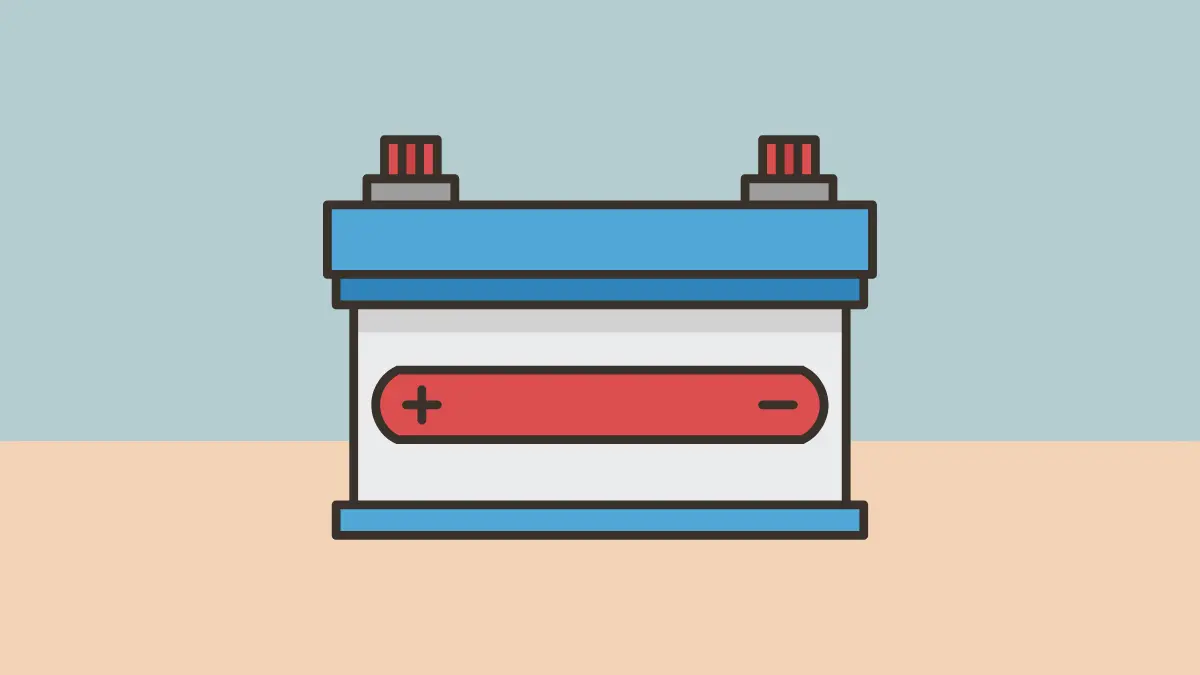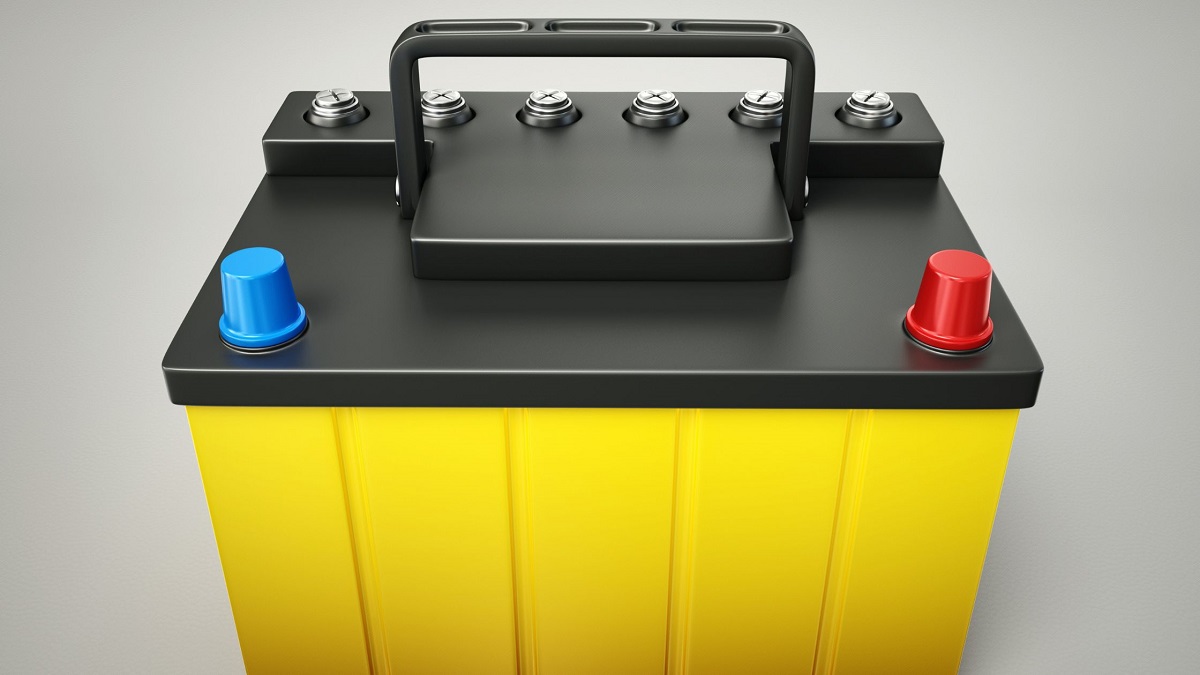In remote locations where power cuts are normal, most houseowners and individuals use an inverter or UPS system to make the non-stop electricity supply. Of course, this is not a 100% efficient and reliable way to secure non-stop electricity as power losses are more, but this is the way many families are maintaining electricity supply at home.

In all of this, the batteries are the biggest cost factor that needs to be maintained otherwise it will die before time and keep causing more cost on your pocket. To keep this issue in mind, I’m sharing some of the tried and tested ways to maintain inverter batteries at home.
Let’s begin with those ways one by one:
1. Maintain the Ideal Temperature.
Most inverter batteries die before time because of poor temperature management. If the battery is getting too cold or overheat due to any reason, it will eventually die.
You must know what the ideal temperature of the battery system is and try best to maintain it for prolonged use. Here is a list of best temperatures for different battery system.
Here’s a table that shows the ideal temperature range for different types of inverters/UPS batteries in various modes like – standby mode (ideal mode), charging mode, and floating mode (simultaneously charging and discharging).
| Battery Type | Standby Mode | Charging Mode | Floating Mode |
|---|---|---|---|
| Lead-Acid Battery (Flooded) | 20°C – 25°C (68°F – 77°F) | 10°C – 30°C (50°F – 86°F) | 10°C – 25°C (50°F – 77°F) |
| Lead-Acid Battery (AGM) | 20°C – 25°C (68°F – 77°F) | 10°C – 30°C (50°F – 86°F) | 10°C – 25°C (50°F – 77°F) |
| Lead-Acid Battery (Gel) | 20°C – 25°C (68°F – 77°F) | 10°C – 30°C (50°F – 86°F) | 10°C – 25°C (50°F – 77°F) |
| Lithium-Ion Battery (Li-ion) | 20°C – 25°C (68°F – 77°F) | 10°C – 45°C (50°F – 113°F) | 10°C – 35°C (50°F – 95°F) |
| Nickel-Cadmium (NiCd) | 20°C – 25°C (68°F – 77°F) | 0°C – 30°C (32°F – 86°F) | 0°C – 25°C (32°F – 77°F) |
| Nickel-Metal Hydride (NiMH) | 20°C – 25°C (68°F – 77°F) | 0°C – 30°C (32°F – 86°F) | 0°C – 25°C (32°F – 77°F) |
| Flow Battery | 20°C – 25°C (68°F – 77°F) | 10°C – 35°C (50°F – 95°F) | 10°C – 30°C (50°F – 86°F) |
Key Considerations:
- Lead-Acid Batteries (Flooded, AGM, Gel): They have a relatively narrow temperature range, particularly for simultaneous charging and discharging, to prevent overcharging and excessive wear. Such batteries last only 3 to 5 years that too when maintained well.
- Lithium-Ion Batteries: Have a wider operational temperature range but are sensitive to extreme temperatures, especially in charging mode, where higher temperatures can degrade performance over time. Such batteries last over 5 years.
- Nickel-Based Batteries (NiCd, NiMH): Can operate in cooler temperatures but need to be kept within specific ranges to avoid damage, especially during simultaneous operations.
- Flow Batteries: Have a robust temperature range due to their design but maintaining them within the ideal range improves efficiency and lifespan.
To maintain the best temperatures, try to place batteries in open and ventilated location. For better protection use some kind of box or cover but leave some holes for ventilation too.
Avoid placing batteries in closed room where temperature is high, or air ventilation is limited. Keep in mind that some batteries emit harmful gas which is not safe for us.
2. Use Only High-Quality Battery Bank/System.
Batteries are surely a costly item, but they perform similarly we paid for it. For instance, a normal cheap battery may die way before or around it is said, while high-quality batteries long and many years ahead mentioned on it.

In real life, I have my small experience too in my initial days, where I have used local cheap tall-tubler inverter battery which is a type of lead-acid battery. It never gave its 100% performance in its whole lifecycle and on top of that it died just in 2 years.
| Local battery | Bought on 2016 | Dead on 2018 |
Then I upgraded to a branded battery which costed me just 15% more than last time excluding the price changed in 2 years which is negligeable when I was calculating.
This new battery is still going on which is said to be work for 5 years maximum.
| Branded battery | Bought on 2018 | 6 years, still going on. |
Last time when I tested this battery, I seen that battery is getting bit hotter now, it will last 2-3 years more if maintained well. I’ll keep updating this section for better experience.
3. Avoid Any Kind of Short Circuit.
Batteries underperform when there is any kind of short circuit or bad wiring in house, also any kind of bad connection will set down more pressure on the battery bank.
To resolve this issue, I think Residual Current Circuit Breaker (RCCB) must be installed in every house. It will trip down the connection once it detects even small current leakage. But do note that it keeps on tripping if the whole house connection is way too old.
4. Use Only Quality Inverter/UPS.
Batteries are always powered and maintained by inverters and UPS, so use only quality ones. I will recommend using only sinewave inverters as they are more efficient and secure.

Most inverters have fast and slow charging mode, use that efficiently on different weather conditions; use fast charging mode in winter and slow charging mode in summer. If such setting switch is not there then leave it on the default mode.
5. Maintain the Battery As Suggested by Brand.
Battery manufacturers/brands often mention on their battery about how to maintain it, for instance, lead-acid batteries require frequent distilled water tops ups. Do not forget to use indicators (usually come with battery) that shows it is time for top up. If you miss it, then battery may heat more and eventually it starts to dry and kill the battery.
I myself, as my golden rule I fill may lead-acid batteries way before it touches the red line.
Similarly, other batteries require surface cleaning because dust accumulation causes further heating, and this could be avoided just like 2-3 minutes of cleaning weekly or monthly.
I hope these are enough ways to maintain inverter or UPS batteries at home.
Leave a Reply